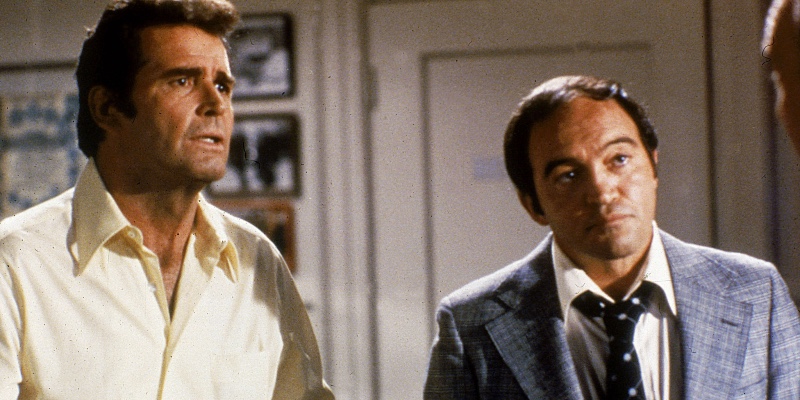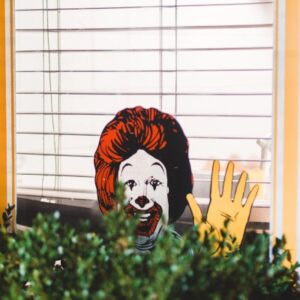Being a PI in the 1970s was wild. I learned this from Jim Rockford and Bing Crosby.
Let me explain.
For many years, Bing Crosby was a private investigator in my hometown of Muncie, Indiana. I’m not talking about the crooner Bing Crosby, who died in 1977, but a local political player and former fire chief in my hometown whose day job was as a PI.
Crosby didn’t operate out of a beachfront mobile home like Jim Rockford, but like the character James Garner played in “The Rockford Files” from 1974 to 1980, Crosby did a lot to deglamorize the PI business for me. As Jim Rockford knew, it was a world of tedious snooping punctuated by moments of revelation of just how low some people would stoop.
It was from Crosby, who died in 2010, that I learned about some of the tricks of the PI trade, including the “peace of mind” investigations that exposed many a philanderer.
In this 40th anniversary year of “The Rockford Files,” I recognize that many of the highlights of “Rockford” for me were episodes with other PIs, some of whom made Garner’s honorable but slightly shady title character seem much more straitlaced. Those shows captured my imagination just like learning about real-life private detective work proved to be fascinating.
Insights into human nature
My real-life P.I. friend had a room full of electronic equipment – probably fairly high-tech for the time – in a room behind his office in an admittedly low-rent-looking business complex in downtown Muncie.
But Bing Crosby’s most useful tools were his insights into human nature, although I’m sure he was occasionally as surprised and disappointed as Rockford when someone who crossed his path behaved badly.
I knew Crosby because of his political work. He’d been a prominent Democratic Party insider and one of the so-called “Magnificent Seven,” a group of city firefighters who pretty much ran the department and, for many years, the city. Crosby’s death came years before some of that group caught justice – and in one case, criminal charges – for corruption.
But even though Crosby had fascinating political insights, I aways most enjoyed the conversations when he talked about the life of a private investigator.
Dream character, dream actor
So much has been said about “The Rockford Files,” some of the best of it here for CrimeReads. There’s a reason for that critical recognition, and of course it’s because the show was so well done.
James Garner is Jim Rockford in our minds in part because of the character’s grumpy charisma. Rockford, who’d done time in prison, hustled for low-risk jobs that would generate some income but didn’t shy away from riskier investigations. He usually worked those cases with caution and a sour rejoinder, rarely having occasion to get his handgun out of the cookie jar in his trailer.
Beyond Garner’s rueful performance, the show itself was one of the best-written crime dramas ever. Created by Roy Huggins and Stephen J. Cannell, the series was what other network TV shows wished they were: Action-filled yes but shot in sunny Los Angeles and populated with a colorful cast of supporting characters that ranged from hustlers to cops to lawyers to conniving businessmen to henchmen. Rockford’s friends and acquaintances – Stuart Margolin as Angel, Rockford’s former “pen pal” most prominent among them – could be counted on to give him as much grief as any duplicitous client or mob boss.
As exemplary as the cast was, the writers behind the scenes were among the best of a generation of television and included not only Cannell and Huggins but Juanita Bartlett and David Chase, the latter who went on to create “The Sopranos.”
Still, what made “Rockford” different from many other P.I. shows was Rockford. Disgruntled and heroic, always ready to bow out of a case before it got dangerous but always willing to step up to save someone. Rockford was a dream character and Garner was the dream performer to play the role.
The best PIs on TV – and real life
“The Rockford Files” might just be – at least in my mind – best when it introduced other private investigators so it could contrast them to Rockford. Some were more hard-bitten than Rockford and some were more idealistic, and they played off Garner’s irascible Rockford perfectly. Isaac Hayes and Louis Gossett Jr. should have landed a hoped-for spin-off series. Dennis Dugan did win a short-lived series as naïve but smart young PI Richie Brockelman. Simon Oakland was the perfect mix of bluster and malice as Vern St. Cloud.
I probably won’t surprise you when I note that my favorite guest PI on the series was Lance White, played by Tom Selleck in his pre-“Magnum, P.I.” days. Selleck is unforgettable as the homily-quoting, unloaded gun-toting “perfect” private investigator every woman throws herself at. White is such a paragon – although frequently one who doesn’t know what he’s doing – that he can’t help but attract Rockford’s ire.
One of the best elements of “The Rockford Files” regarding private investigators was how shady some of them were. I’m talking about the kind of thing that, if he’d been reported to a state licensing agency, might have gotten Rockford in trouble, like showing up unannounced with a folder of papers or a clipboard and convincing a suspect that he was someone he was not.
As for my old friend the P.I., I’m thinking of the “honey traps” he would set as part of what he called a “peace of mind” investigation. A Crosby client might suspect her husband or boyfriend was cheating on her, so the PI would hire an attractive woman to lie in wait for the probable cheater at a bar or even along his normal route home. Along the side of the road she would wait, hood up on her car, and the cheater would stop to offer help, ingratiate himself and try to put the moves on the woman. Infidelity indicated, client enlightened.
Like Jim Rockford, Crosby had his own cool mode of transportation: Rockford had a golden Pontiac Firebird. Crosby had a motorcycle.
One day in the mid-1990s, he and I were talking about a story that I was trying to break and a person – who just happened to be a topless dancer with evidence against a corrupt judge – I was hoping to find. Crosby thought he might know where the woman was.
“Hop on,” he said as he got on his Harley-Davidson. I got on behind him and I have to say the fear I experienced during that ride chased away any concerns I had about asking the woman any questions. (The ride was wild but anticlimactic: we couldn’t find her.) It was not as adventurous as accompanying Jim Rockford when he was executing a J-turn, but it was something.
Crosby employed techniques that were as clever and sneaky as anything Rockford might have used. Harking back to his work as a political operative in a notoriously corrupt city, he cited the trick of calling a local schemer in the middle of the night, catching them disoriented and making them anxious by declaring that their partner in crime was betraying them.
“Johnson is talking to the cops,” he would say before hanging up. Chaos sparked. Fallout awaited.
(This tactic only worked back in the days when people would answer their phone, even at 3 a.m., without knowing who was calling.)
Rewatching some “Rockford” episodes recently, I’m more convinced than ever that my old friend would have fit right into the series.

















